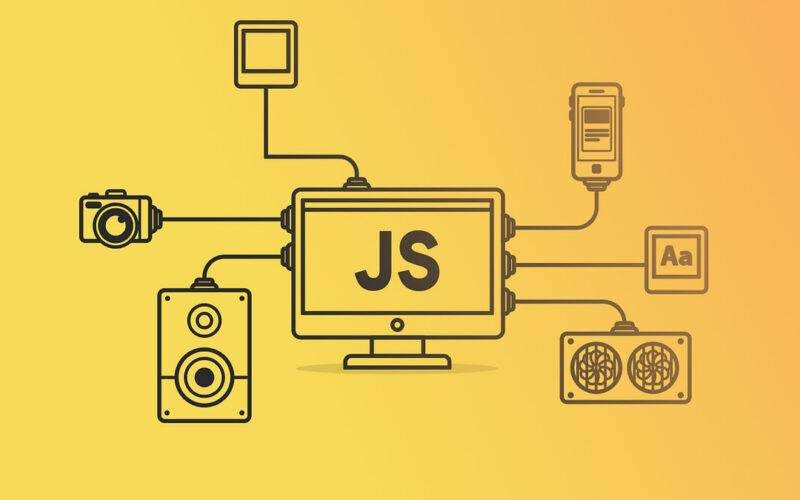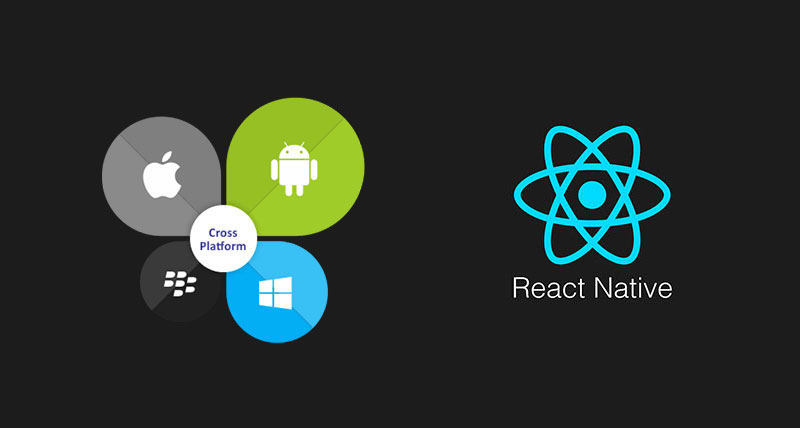Unlocking Capabilities: What is JavaScript Used For?

Picture a blank canvas. Now, with a single stroke of genius, you command lines, shapes, and colors to dance, crafting a masterpiece.
That’s the essence of JavaScript in the realm of web design. Except, this canvas is your browser, and the masterpiece? It’s the dynamic, interactive webpages that glue eyeballs to screens.
Diving into what is JavaScript used for, we unravel a tapestry of applications as vast as the web itself.
This is no hyperbolic poetry; JavaScript literally brings static pages to life. Imagine a simple form transforming into a robust, real-time validation engine. That’s JavaScript in action.
In our discourse, expect to navigate through the landscapes of AJAX, APIs, and frameworks like React.js—tools that allow sites to interact seamlessly.
By the time our paths converge at the article’s end, you’ll harness a profound understanding of JavaScript’s utility belt: from front-end development to server-side scripting, to animating interactive websites.
This is not just an exposition; it’s the unveiling of JavaScript’s realm, a guiding beacon for the full-stack developer eager to carve out immersive user experiences.
What is JavaScript Used For?
JavaScript is primarily used for adding interactive behavior to web pages, making it essential for front-end web development. It’s also widely used in backend development via Node.js, and for building mobile apps and games. JavaScript’s versatility and ubiquity make it a fundamental tool in modern web development.
| Use Case | Features | Frameworks/Libraries | Performance | Notable Examples |
|---|---|---|---|---|
| Web Development | Interactive UIs | React, Vue.js, Angular | Varies with implementation | Almost all websites |
| Server-Side | Full-stack capabilities | Node.js, Express | High concurrency with Node | Netflix, LinkedIn |
| Mobile Applications | Cross-platform apps | React Native, Cordova | Near-native performance | Instagram, UberEats |
| Desktop Applications | Native OS integrations | Electron | Depends on usage | Visual Studio Code, Slack |
| Games and Graphics | Canvas, WebGL | Phaser, Babylon.js | GPU acceleration available | Browser-based games |
Fundamental Concepts of JavaScript
Basics of JavaScript Programming

Imagine JavaScript as the Swiss Army knife of the web development world. It’s versatile, and once you get the hang of it, there’s no turning back.
So, what is JavaScript used for in the basics? It’s all about bringing web pages to life, beyond the static HTML and CSS.
JavaScript, at its core, is about interaction. Whether it’s clicking a button to see more content or entering data into a form that reacts right away.
You’ve seen those cool dropdown menus on websites, right? That’s JavaScript!
Key Features and Capabilities
JavaScript is like the magic wand of the web world. It makes web pages responsive in real-time, interacts with users, and even handles data without needing to hit refresh.
Plus, it’s everywhere – from your browser to big servers.
JavaScript Essentials
The essentials are like the building blocks. Think of functions, arrays, maps – these are the tools that let you create, store, and manipulate data on the fly.
Functions are the actions, while arrays and maps are like the treasure chests, holding all your precious data.
JavaScript in Web Design
See the Pen
Animated Easter SVG Icons (via anime.js) by Natalia Davydova (@nat-davydova)
on CodePen.
Now, let’s talk about how JavaScript jazzes up web design. You’ve seen those websites with cool JavaScript animations that feel like they’re talking to you?
That’s JavaScript working with HTML and CSS to create an experience, not just a webpage.
Interaction with HTML and CSS
JavaScript doesn’t work alone; it’s a team player. It takes the structure from HTML and the style from CSS, then adds the magic of interaction. It’s the puppeteer that makes the HTML/CSS puppet dance.
Enhancing User Experience and Interface
This is where JavaScript shines. It’s all about making websites not just look good but feel good. Smooth animations, responsive buttons, and interactive elements – all thanks to JavaScript.
What is JavaScript used for, really? It’s the behind-the-scenes hero making websites interactive, engaging, and a lot more fun. It’s not just code; it’s the bridge between the website and the user, making sure everyone’s having a good time.
Oh, and if you’re looking to dive deeper into JavaScript, check out some of the best JavaScript books out there. They’re a treasure trove for both beginners and seasoned coders.
Practical Applications of JavaScript
Web Development
Let’s get real – JavaScript is the secret ingredient in the world of web development.
It’s what turns those static HTML/CSS pages into something you can actually interact with. Think about the last time you used a website and everything just flowed. That’s JavaScript in action!
Dynamic and Interactive Web Pages
Ever clicked on a “Load More” button and watched new content magically appear?
That’s JavaScript making web pages dynamic, letting content update without a full page reload. It’s all about making your browsing experience smoother and cooler.
Use in Frameworks like React, Angular, and Vue
These frameworks are like the VIPs in JavaScript’s world. They help developers build robust, efficient, and interactive web apps.
Each has its own superpower: React for its virtual DOM, Angular for its two-way data binding, and Vue for its simplicity. Want to dive deeper? Check out these amazing JavaScript frameworks.
Mobile Applications
Who said JavaScript is just for browsers? It’s also a star in the mobile app universe.
Cross-Platform App Development

Thanks to frameworks like React Native and Ionic, JavaScript lets you build apps that run smoothly on both iOS and Android. It’s like hitting two birds with one stone – write once, run everywhere.
Frameworks for iOS and Android App Creation
These frameworks are not just time-savers, but they also bring the power of JavaScript to mobile devices.
They bridge the gap between web and mobile, making app development more accessible.
Interactive Features
Alright, let’s talk fun stuff. JavaScript isn’t just about functionality; it’s about creating experiences.
Games and Animations
JavaScript turns the web into a playground. From simple browser games to fancy web animations, it adds the fun factor to websites.
Interactive Maps and Data Visualization
Ever used Google Maps? That smooth, interactive experience is powered by JavaScript.
It’s also big in data visualization – turning complex data into easy-to-understand, interactive charts and graphs.
Advanced Uses
JavaScript isn’t just playing in the minor leagues; it’s also big in the advanced stuff.
Virtual Reality Experiences
Yes, JavaScript steps into the VR world too. With libraries like A-Frame, it’s bringing VR to web browsers, making it more accessible.
Booking and Reservation Systems
These systems need to be fast, reliable, and user-friendly. JavaScript makes it possible to build systems that users can interact with in real-time, making online booking a breeze.
JavaScript in Server-Side Development
Server Applications and Web Servers
Alright, let’s switch gears and talk about something a bit unexpected. JavaScript isn’t just for making web pages look snazzy. It’s got some serious skills in the server-side arena too. This is where it steps out of its browser comfort zone and helps manage the heavy lifting on web servers.
Use of JavaScript in Server-Side Scripting with Node.js
Node.js changed the game. It’s like JavaScript got a power-up and said, “Hey, I can handle servers too!” With Node.js, JavaScript can manage server requests, connect with databases, and even power entire web servers. It’s no longer just the language for front-end development; it’s a full-stack powerhouse.
Wondering how to get a handle on this? There are some top-notch JavaScript courses that can give you a solid foundation in Node.js and server-side JavaScript.
Building and Managing Web Servers
JavaScript on the server side means more control and efficiency. Think about managing user data, processing form submissions, or even controlling how your web server handles requests. JavaScript is up there, making sure everything runs smoothly, efficiently, and securely.
Career Opportunities and Learning JavaScript
Career Prospects
Let’s talk about the future – your future, specifically, if you’re thinking about diving into the JavaScript world. You’ve seen what JavaScript can do, but what can it do for you, career-wise? Spoiler alert: a whole lot.
Demand for JavaScript Developers
It’s like everyone wants a piece of JavaScript talent. Businesses, big and small, are always on the hunt for folks who can speak JavaScript. It’s not just a nice-to-have skill; it’s a must-have in the web development scene.
Salary and Job Security Aspects
Here’s the deal – JavaScript skills can lead to some pretty sweet paychecks. It’s a skill that’s in high demand, and that demand isn’t going down anytime soon. Plus, it’s a core language for web development, so job security? Check.
Learning Pathways
So, you’re intrigued and thinking, “Maybe I should get in on this JavaScript action.” Good thinking! But where to start?
Resources and Courses for Learning JavaScript
There’s a treasure trove of resources out there. From online tutorials to boot camps, the learning paths are as varied as they are rich. You can start with the basics and work your way up to the nitty-gritty of frameworks and server-side JavaScript.
If you’re looking for a place to start, there are some incredible JavaScript courses that can set you on the right path.
Time Commitment and Progression in JavaScript Proficiency
Here’s the thing – learning JavaScript is a journey, not a sprint. You start with the basics, like variables and loops, and gradually move on to more complex stuff like asynchronous programming and frameworks. It’s a skill that keeps on giving as long as you keep on learning.
FAQ On What Is Javascript Used For
Why is JavaScript such an essential tool for web developers?
JavaScript is like the Swiss Army knife for web developers. It’s indispensable for creating interactive, engaging user experiences. Harnessing JavaScript, devs can conjure anything from dynamic content to real-time data updates, tailoring sites that respond to user actions with finesse.
How does JavaScript enhance user interaction on websites?
Think of a website as a conversation; JavaScript deepens that dialogue. It allows websites to interact with users beyond static display—form validation, event handling, and animation are just a few tricks up its sleeve to keep users hooked.
Can JavaScript be used for back-end development?
Absolutely, and that’s the magic of Node.js. It extends the reach of JavaScript—traditionally a front-end player—into the back-end arena, letting developers wield JavaScript across the full-stack. This universality simplifies the development process, making it a favorite for both client and server-side scripting.
What role do JavaScript frameworks play?
Frameworks like React.js, Angular.js, and Vue.js are the building blocks for modern web architecture.
They provide pre-written JavaScript code—tools and libraries—that accelerate the development of highly responsive web designs and Single Page Applications (SPAs), ensuring robust and maintainable code.
Is JavaScript required for adding animations to web pages?
While not the sole option, JavaScript shines brightly here. It unlocks a realm of possibilities for animations, making interactive websites not just visually captivating but also performance-optimized. Leveraging APIs like the Canvas and WebGL, it pushes the envelope for what web animations can achieve.
How does JavaScript support mobile responsive design?
In an era dominated by smartphones, responsive web design is non-negotiable. JavaScript, especially when paired with HTML and CSS, makes content adapt fluidly across devices, ensuring usability and consistency.
It gracefully orchestrates layout shifts and dynamic content rendering, delivering mobile-first experiences.
What distinguishes JavaScript from other programming languages used on the web?
JavaScript’s ubiquity across browsers sets it apart. It runs natively where others may require plugins.
As a multi-paradigm language adept in event-driven, functional, and imperative programming styles, JavaScript champions versatility. And with Node.js, it strides beyond the browser, becoming a singular choice for full-fledged application development.
How does JavaScript work with APIs?
JavaScript’s interplay with Web APIs such as the DOM, Fetch, and Geolocation is akin to an artist with a palette—seamlessly integrating disparate elements. It’s how web apps offer features like retrieving data, interacting with audio and video, or accessing a user’s location—all in real-time.
Can JavaScript operate offline?
Indeed, JavaScript breaks the internet-dependency shackles. Thanks to Service Workers and related APIs, developers can craft Progressive Web Apps (PWAs) that offer offline functionality. This means applications can load and operate effectively, even when your digital lifeline to the web is severed.
In what ways does JavaScript improve website performance?
JavaScript can be a performance enhancer when used wisely. It facilitates asynchronous programming through AJAX, minimizing server load and enabling smooth page updates.
Clever use of JavaScript libraries and careful script optimization leads to faster load times and an overall snappier browsing experience.
Conclusion
Embarking on this journey, clarity unfurls; what is JavaScript used for has morphed from a whispered question into a shouted chorus of understanding.
It’s no mere script; it’s the conductor orchestrating symphonies of interactive websites and dynamic user experiences.
In the palms of creatives, it molds client-side scripting into art. With Node.js, the same brush strokes paint server landscapes. Apt in DOM manipulation, crafting Asynchronous magic, and driving progressive web applications (PWAs), it transcends boundaries.
Recollecting the travelled path:
- Unveiled the potency of JavaScript in responsive web design.
- Illuminated frameworks and libraries—the staunch allies in development.
- Explored the terrain of web APIs, the labyrinthian tunnels connecting functionality.
- Discovered JavaScript’s capacity for offline grace with Service Workers.
So there it rests, the tale of JavaScript, an unassuming name for a tool of limitless potential, a phoenix rising continually from the ashes of innovation to redefine what we envision web technology to be.
- Optimize Your Workflow: Top VS Code JavaScript Extensions - May 13, 2024
- Communicate Globally: Top Apps Like Skype - May 12, 2024
- The Best Serverless Frameworks for Developers - May 12, 2024








